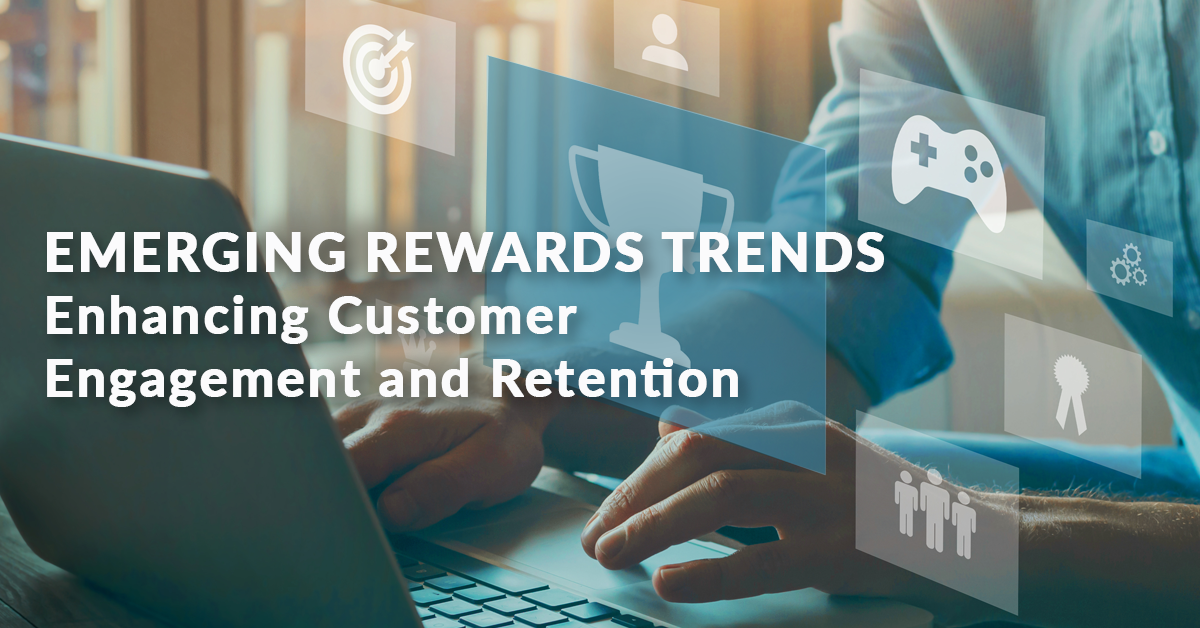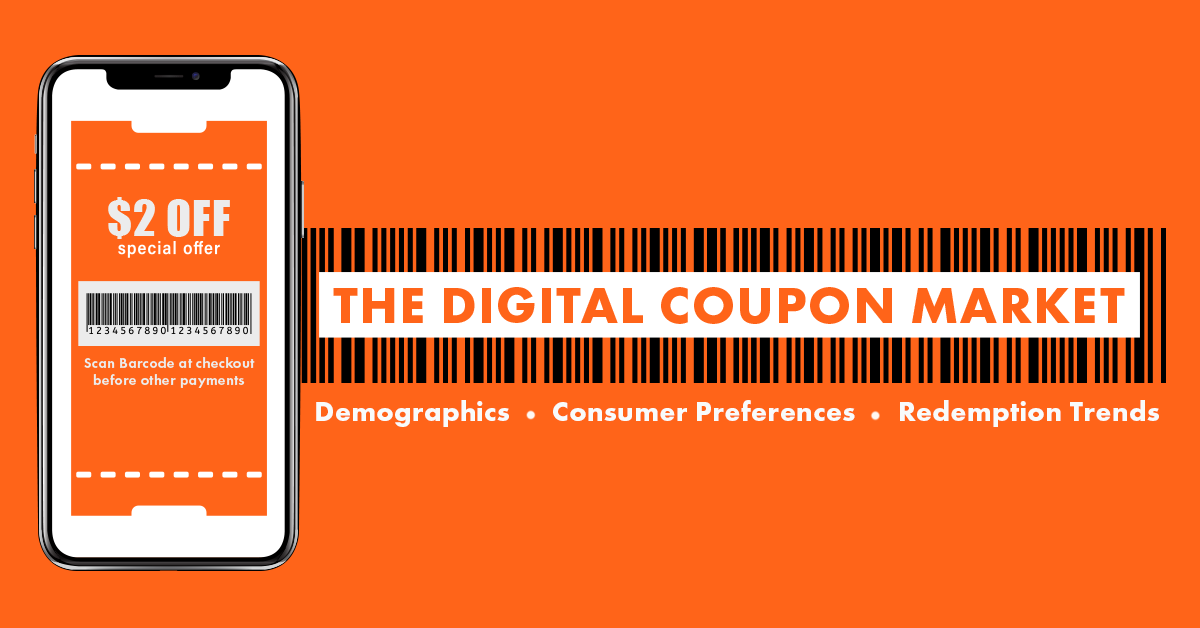Ensuring a brand is top-of-mind for consumers is every marketer’s goal – a good rewards strategy can be key to making that happen. Attractive rewards programs can entice consumers to try new products, make more purchases, and extend their overall relationship with a brand. Small wonder then, that shoppers are being assailed by rewards offers everywhere they turn in the retail aisle. But incentivizing consumers these days requires thinking beyond the impersonal and the ad-hoc – research suggests that today’s savvy shoppers are sensitive to exactly how a brand acknowledges and rewards them, with sincerity, timeliness and consistency making all the difference.
- A simple “thank you” is more personal and can be more effective than a cash reward
- The timing of a reward is important and needs to be directly linked to a consumer action
- The rewards lifecycle matters in totality, with consumers assessing the consistency and quality of rewards over time, to assign value to the brand relationship
In order to provide some guidance to our brand and agency partners on what to consider when designing a rewards program, we’ve put together this basic primer on The Right Way to Reward and Incentivize Consumers.
Discounts and Freebies Work…
People really like free stuff. According to Oracle Hospitality research, it’s largely why consumers decide to join a rewards program. – 71% – for money off of every purchase. – 63% – for free products
…But Rewards Are More Attractive Overall
Reward-based promotions are outperforming discount-based promotions across a number of categories. by 21% – for positive brand image, by 13% – for purchase intention and by 42% – with regard to brand differentiation
Consumers Like Widely Redeemable,‘Open Loop’ Rewards…
64% – picked a smaller $ amount on a gift card that could be used anywhere and 36% – selected a higher value gift card redeemable only at the store where the purchase was made
…With Personalized Offerings As Well
Results from a Virtual Incentives study show that tailoring rewards works. 56% said that receiving a personalized incentive would improve their consideration of the brand. 63% preferred a personalized reward based on their purchase history
Digital Platforms Are Leading the Way
Led by Millennials…
33% – find traditional rewards programs a turn-off for their insistence on physical membership cards
Mobile and digital platforms are gaining dominance for their ‘lean wallet’ option
70% – would have a more positive opinion of a brand that had a smartphone loyalty/rewards card
…for the choices they offer consumers
Digital puts consumers in charge of how they reward themselves – while music draws some of the highest responses from consumers, our own research shows consumers nd rewards such as Amazon gift cards and cash back are attractive for their widely redeemable benefits – 21% Music, 37.2% Amazon gift cards, 24% Cash back.
…for their appeal to Millennials
Digital rewards directly cater to this increasingly crucial demographic. 33% – prefer digital rewards such as E-gift cards and instant media downloads. $62 BN – spent on digital media content in the US and Canada
…for their innovations
Digital & mobile rewards have now spawned their own universe of offerings, covering not just the ever popular music & games, but data itself.
…for their immediate gratification
Snipp’s own research has found that many campaigns nowadays are judged by their initial success- immediacy is an important call out when deciding how rewards are earned and distributed. 18% increase in consumer participation for instant-win programs (within the rst 20 days)
…for their engagement & marketing opportunities
While digital rewards are convenient to shoppers, they also benefit brands and retailers. They provide the ability to track and maintain consumer engagement. 20%-30% more “marketable”: Brand partnership programs catering to fully mobile experiences (with rewards like Uber and Chef’d)
THE RIGHT WAY TO REWARD & INCENTIVIZE CONSUMERS
A well constructed incentive program has to match a target audience with its preferred rewards – linked via the right promotional vehicle – in order to meet its specific marketing goal. But because audiences and goals can be variable, there isn’t one single off-the-shelf rewards strategy that will work across the board. However, there are some broad marketing mainstays that most brands share, for which certain rewards constructs work well:
- Creating Awareness and Incentivizing Trial
- Generating Consumer Engagement
- Driving Consumer Loyalty
1. CREATE AWARENESS AND INCENTIVIZING TRIAL
The Goal: The objectives here are to attract potential new consumers within a target market segment and introduce them to a brand and its products.
The Tools:
Highly visible, attention-grabbing promotions.
Instant win competitions
‘Pranksvertising’ – a promotional method that relies on scaring or pranking an unsuspecting person or audience
Buy-one-get-one
Referral programs
One-to-one marketing promotions
Rebates
The Rewards:
Highly relevant & immediately gratifying rewards with more chances to win, Customization options and Redeemable anytime, anywhere
- Micro/Digital rewards – music, movies,games, ringtones, etc.
- Product samples / brand merchandise
- Cash back with multiple delivery method
- Virtual gift coupons and cards
Digital micro-rewards are a low-cost, creative way to offer relevant incentives to consumers, with brands having the option to only pay for the rewards that are actually redeemed – while also receiving all of the transactional data needed to deepen their engagement with the consumer. These rewards have the added benefit of not devaluing the brand, as discounts so often do.
E-gift cards and coupons are also growing in popularity – a study by Mercator Advisory Group found that in 2011, retailers surveyed said that, on average, about two percent of the dollars loaded onto gift cards went onto e-gifts. By 2015, it was nearly ten times that amount. In addition to being a crowd-pleaser for their convenience to consumers, brands can also maintain their engagement since the reward is received via email, text or app, and the brand’s messaging can be present.
Attention-Grabbing Case Example:
Samsung’s All Eyes On S4: In a bid to create buzz around its new launch, Samsung offered players a chance to win a new generation mobile phone simply by keeping their eyes on it for a certain period of time. They were challenged to avoid all types of outrageous distractions such as barking dogs, bickering couples and motorcycles, and crowd heckling. The competition tested the will and resilience of the players, and created an experience that increased the phone’s brand awareness along two layers – among the contestants, as well as the secondary audience of spectators at the scene and online as well.
Digital Reward Case Example:
Unilever’s Axe leveraged an in-store partnership with supermarket giant Walmart, designed to attract the brand’s young male audience. Using music downloads as reward incentives, consumers who participated in the promotion sent in snapshots of their purchase receipts via text or web upload to the SnippCheck platform. Once validated, they received a link to a digital store where they could instantly redeem their reward for music selections of their choices. With this kind of promotion, Axe kept in mind its target demographic by making the reward highly customizable with real meaning and relevance. Music continues to be a micro-reward that draws some of the highest responses from consumers.
2. GENERATE CONSUMER ENGAGEMENT
The Goal: Extend the consumer/brand relationship by creating and delivering timely, personalized messages to consumers.
The Tools: Longer term engagement programs, often with a competitive element.
Sweepstakes
Game-based promotions with leaderboards
Continuity/ Punch-card programs
User-generated programs
Rebates
The Rewards:
To engage consumers and extend the consumer/brand relationship – Greater level of personalization, based on more consumer interaction and personalized / option to pick their prize (Eg: credit on the SnippRewards store)
- Data rewards
- Experiential rewards (Uber, Spa, Holiday)
- Multiple mini prizes with a grand prize
- Cash back with multiple delivery method
- Charity rewards
Single-use incentives of the kinds offered in one-time promotional offers can be exciting to consumers, but they really don’t extend the consumer/brand relationship beyond that point. The most effective incentives are multi-use, giving consumers repeated exposure to the brand months beyond a purchase. While punch-card programs have been used for decades to achieve such engagement, more recently in digital and virtual modes, gamication (the use of gaming concepts in a non-game setting) is proving a particularly effective approach to catching the sustained attention of a target audience. Fans love to compete, and adding compelling rewards and incentives can create even more motivation to “win”. Extended interaction incentives also allow for brands to sponsor rewards in collaboration with other brands, driving sales, increasing revenue and exposure for all involved, while defraying costs.
Data Rewards Example
Snipp has partnered with top American Telecommunications Corporations to develop an innovative way to reward consumers with mobile data upon completion of a qualifying transaction. By entering a pincode received, consumers are directed to a mobile website where they can select their data reward option and have it instantly added to their mobile account.
Gamication Case Example
McDonald’s Monopoly Game: McDonald’s has consistently succeeded in increasing sales by incorporating the classic game of Monopoly in its long-running, world-wide promotion, dating back to 1987. When consumers buy certain products from McDonald’s, they receive tickets representing spaces on the Monopoly game board. The goal is to collect all the pieces of the same color to be eligible for a prize. Not just a promotion, this game has become a part of popular culture in many countries – a 2010 report finding that McDonald’s increased its sales by 5.6% in USA through this program, and on average boosts McDonald’s earnings roughly 2% to 6% over standard business months.
Collaborative Rewards Example
T-Mobile Tuesdays: T-Mobile Tuesdays campaign encourages regular interaction with consumers, who can receive free perks and rewards for signing up, downloading the app, and purchasing T-Mobile products. Sponsor collaborations have led to popular reward offerings like Lyft vouchers, unlimited data for playing Pokemon Go, free treats from fast food chains like Wendy’s, and free games. Users can even receive T-Mobile stock shares. The campaign proved so popular that its app crashed on launch day due to the high demand.
Punch Card Case Example:
Kimberly Clark ran a promotion for Depend, its adult incontinence brand, in order to incentivize consumers to choose Depend over competing alternatives in the retail aisles. A six month ‘Confidence has its Rewards’ punch card promotion was launched, with a theme to get people back to ‘doing what they always did’ – and win rewards designed around the confidence building theme, such as movie tickets, restaurant cards etc. Consumers could buy 4 qualifying products over the six-month period and submit their receipt to receive a code to redeem gift cards on a custom branded SnippRewards site, and an entry into a monthly sweep to win a Fitbit.
2. DRIVE CONSUMER LOYALTY
The Goal: Bring consumers in to long term brand relationships, with higher and higher potential for influencing shopping behavior.
The Tools: Base to Enterprise loyalty programs
The Rewards: Highly Personalized, Tailored Rewards Based on Extensive Consumer Knowledge
Tiered rewards and cumulative discounts
Lifestyle rewards (social liking/ sharing/validating, playing games, etc)
Gift vouchers to drive traffic back to retail
Brand partnerships for reciprocal rewards
Experiential rewards (Uber, Spa, Holiday)
Value-based/ charity rewards
An optimal reward scheme will provide the platform for an effective loyalty program, attracting ‘ideal’ consumers and making it easier for them to qualify for membership in future years. The kinds of rewards that encourage long term brand loyalty, however, are: Experiential, Lifestyle & Value Driven and Exclusive.
Experiential
Experiential rewards are growing attractions for discerning consumers. A study by Colloquy found that live event tickets are especially appealing.
Experiential Rewards Case Example
North Face’s VIPeak Rewards program offers every member exclusive access to one-of-a-kind expeditions around the globe. The outdoor brand works with expert travel guides to develop thoughtfully created, ultimate adventures that include hiking in Nepal, ice climbing and rock climbing expeditions that members can’t find anywhere else. Reward points are earned for purchases as well as participation in North Face events, and can be redeemed for incredible experiences.
Lifestyle and Value Driven
Shoppers also want brands to reward them for challenging themselves and for contributing to initiatives that align with their values and lifestyles. Nike has been delivering on this notion using its running app and its Nike training app to reward users with content, social influence, and discounts on merchandise. Walgreens and Sears also offer rewards for physical activity, in addition to shopping. When consumers start to relate a brand to their healthy lifestyle or their charitable goals, then lasting loyalty can be built.
Value-Driven Rewards Case Example
Barbara’s – Barbara’s wanted to create a simple and engaging new program to drive sales and build loyalty, highlighting the company’s support for endangered animals as well as educate and entertain families while learning about endangered animals. Snipp is running a kid-friendly, animal-themed loyalty program on the SnippCheck and SnippLoyalty platforms. Shoppers earn points for purchase (buy products and submit their receipt) and non-purchase behaviors like watching videos, playing games and downloading activities for kids. These points can be redeemed for rewards like adopting endangered animals (Eg. Puffin) from the National Wildlife Foundation, plush animals and animal-themed activity books.
Exclusive
Exclusivity involves providing members with access to unique events or opportunities that would be difficult or impossible to obtain without the help of a rewards program. With rewards such as front-of-the-line positions at highly select events, first trial of hot products, or the services of a personal shopper, membership becomes a passport to privilege, and not just a discount card. These exclusive offerings can elicit high levels of loyalty amongst consumers.
Exclusive Rewards Case Example
Amazon Prime – Membership comes with a price with Amazon Prime, making the reward offerings immediately exclusive and more valued. The rewards include unlimited free two-day shipping on all products, unlimited digital photo storage, early access to Amazon Lightning deals, and over 800,000 ebooks and videos free of charge. In 2012, there were an estimated 7 million Prime members; now there are nearly 50 million, who are reported to spend more than twice as much as non-members on Amazon products annually.
THE BOTTOM LINE ON REWARDS
The best rewards programs incentivize consumers into building a relationship with the brand. They do it by putting the focus squarely on the consumer, tailoring offerings that keep the consumer’s needs, preferences and intentions top-of-mind. Based on what we’ve learned, that involves:
Offering variety – in earning and redemption of rewards: Different demographics and age groups have different reward and redemption preferences – physical/digital rewards, small/large denominations, electronic/mail delivery, etc. Allowing consumers to earn rewards by engaging in social media interactions with a brand also encourages longer-term relationships and positive brand association. Cater to all comfort levels and leave no consumers behind.
Making it digital (as far as possible): Digital rewards promotions are often the most practical and cost-effective, as they can be incorporated into virtually any promotion and are quickly scalable in their implementation. Options include ‘code-on-pack’ promotions that are printed on product packaging, receipt processing promotions which allow consumers to submit pictures of their receipts of qualifying purchases to receive rewards, and SMS based promotions where rewards codes are delivered via text message for online redemption.
Being on time with rewards: Ensure that rewards are immediately linked to consumer actions. People like to be acknowledged, so the reward response must be perceived as a reaction to their effort – the greater the effort, the greater the reward.
Being social: Allowing consumers to earn rewards by engaging in digital and social interactions with a brand encourage longer-term relationships and positive brand association.
Gathering the data: The back end of rewards programs can serve as a powerful instrument for measuring consumer response to marketing. By tracking data on rewards promotions, marketers can see what’s working, and with whom – and then align future promotions to build a deeper connection with the entire spectrum of their consumers.





